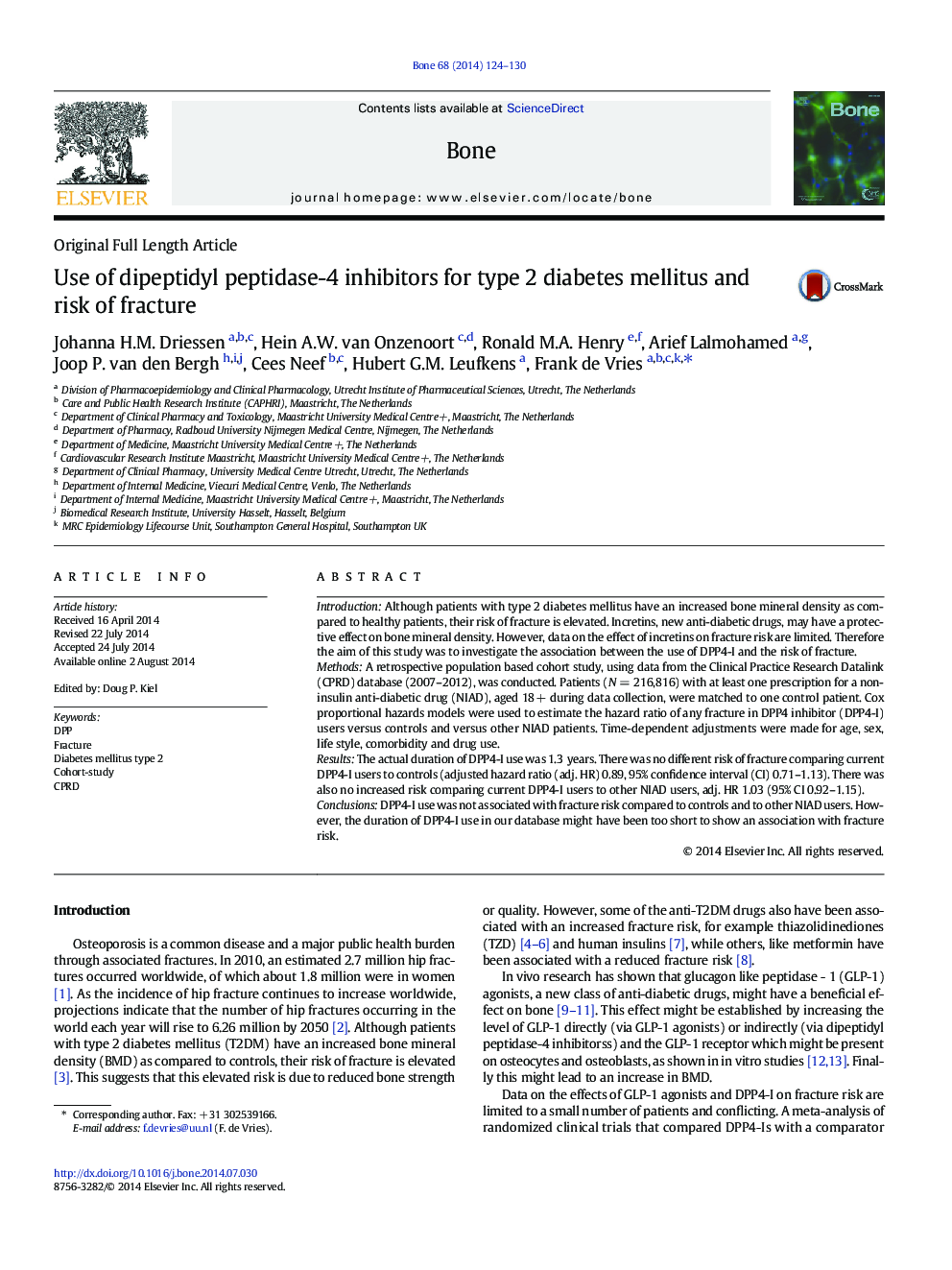| کد مقاله | کد نشریه | سال انتشار | مقاله انگلیسی | نسخه تمام متن |
|---|---|---|---|---|
| 2779200 | 1568151 | 2014 | 7 صفحه PDF | دانلود رایگان |
• We did not find an association between DPP4-I use and (osteoporotic) fracture risk.
• Increasing cummulative dosing of DPP4-I was not associated with fracture risk.
• Users of both TZD and DPP4-I have a 1.8-fold increased fracture risk.
• More research is needed to investigate the effect of long-term DPP4-I use on fracture risk.
IntroductionAlthough patients with type 2 diabetes mellitus have an increased bone mineral density as compared to healthy patients, their risk of fracture is elevated. Incretins, new anti-diabetic drugs, may have a protective effect on bone mineral density. However, data on the effect of incretins on fracture risk are limited. Therefore the aim of this study was to investigate the association between the use of DPP4-I and the risk of fracture.MethodsA retrospective population based cohort study, using data from the Clinical Practice Research Datalink (CPRD) database (2007–2012), was conducted. Patients (N = 216,816) with at least one prescription for a non-insulin anti-diabetic drug (NIAD), aged 18 + during data collection, were matched to one control patient. Cox proportional hazards models were used to estimate the hazard ratio of any fracture in DPP4 inhibitor (DPP4-I) users versus controls and versus other NIAD patients. Time-dependent adjustments were made for age, sex, life style, comorbidity and drug use.ResultsThe actual duration of DPP4-I use was 1.3 years. There was no different risk of fracture comparing current DPP4-I users to controls (adjusted hazard ratio (adj. HR) 0.89, 95% confidence interval (CI) 0.71–1.13). There was also no increased risk comparing current DPP4-I users to other NIAD users, adj. HR 1.03 (95% CI 0.92–1.15).ConclusionsDPP4-I use was not associated with fracture risk compared to controls and to other NIAD users. However, the duration of DPP4-I use in our database might have been too short to show an association with fracture risk.
Journal: Bone - Volume 68, November 2014, Pages 124–130
